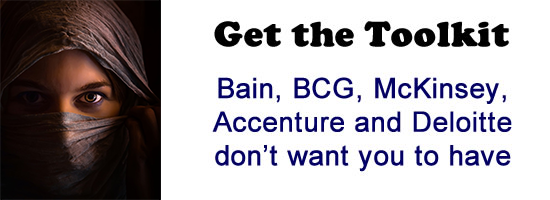One Negotiation Strategy That Will Make You a World-Class Negotiator
There are countless ways to improve your negotiation skills, but none are as powerful as this.

Negotiation is complex because people are complex. There’s no way around that.
If you’ve followed my Inc columns you know that negotiation is one of my favorite topics to write about. In part that’s because I am fascinated by how little we know about the art and science of negotiation outside of the popular mythology that we get through the Hollywood version of the iron-fisted negotiator who refuses to budge and walks from the table in an indignant huff.
Negotiation is far more subtle and nuanced. And it’s something we all do many times each day with friends, our spouse or partner, our children, suppliers and colleagues, and even our pets. Which is why the image of the perfect negotiator is a myth. Negotiators are humans; mere mortals with emotions and flaws and insecurities.
While we all want to believe that we are cool and composed negotiators with nerves of steel, unwavering determination, and the persuasive capabilities of Henry Kissinger, negotiation always stirs our emotions and narrows our vision. It’s a competitive arena with high stakes that requires extreme focus, brings out the best of our analytical skills, and the worst of our fears. And that’s why I’m so in love with it. Few things will push us further to reach deeper.
Primal Instinct
Negotiating something really important is a primal as it gets. It’s pretty much in our DNA, triggering our survival instincts and our deeply rooted fight or flight response. If you cannot negotiate then you can’t survive in a tribe. Which is why there is no such thing as a negotiation that is dispassionate. Somewhere in your primitive Neanderthal brain an ancestral strand of chromosomes are fighting for their life.
Alan Cutler, a professional negotiator, described it this way, “Human beings cannot absorb or be aware of all activities around us. We are genetically disposed to focus on what we perceive as the greatest threat. This is a self-defence [sic] and survival mechanism. Focusing is an important example that coordinated teamwork can accomplish what we cannot do alone.”
If you believe you’re better than that I’d suggest you watch this video before reading any further. Were you surprised by how well you did and simultaneously how oblivious you were? Our brains are great at blocking out everything but what we believe to be the essential facts.
Blurring The Lines
This sort of necessary hyperfocus is required to negotiate, but it’s also where we most often trip ourselves up in any complex negotiation. We become myopic and lose sight of the context and larger goal of the negotiation. It’s easy to do when you’re stuck inside of your own head trying to understand both your own motivations and guessing at those of the other party. As much as you try to see outside of your own biases and preconceptions, you can’t. We draw hard lines around our perception when what we actually need is to blur them just enough to see what lies outside of our focal range.
This is why one of the most important strategies for a good negotiator isn’t what they themselves bring to the table but instead the ability to see the entire context of a negotiation clearly from outside of their own narrow perspective. The only way I’ve found to do that is by bringing along what I call a silent observer.
It’s ironic that most people don’t even consider doing this since negotiation is inherently a collaborative process in which you are attempting to work with someone to achieve an outcome that benefits both parties. Yet, we are all drawn to the image of the sole negotiator who can single handedly bring his opponent to his or her knees. It doesn’t work that way. The reason the vast majority of negotiators fail is because of ego and an inability to hear what the other party is saying when it doesn’t fit what they want to hear.
The silent observer tempers the former and amplifies the latter. He or she is someone who is on your side but whose role it is to observe, both you and the other party, in order to expand your field of view and to better prepare you for the ongoing dialog that leads to informed resolution Their role is not to participate in the actual negotiation by contributing during the time that the two parties are at the negotiating table.
Doing this right means that you have to define the role of the observer clearly, and without compromise, as someone who will not contribute in any way to the conversations between the two parties. Although they are present during the entire negotiation the value they bring is on the offline conversations that you need to have in order to separate the substance of the negotiation from the emotional backdrop. This means that they are diligently paying attention to the many subtle nuances of both parties actions and behaviors, which provide valuable clues and insights that are almost always lost in the heat of the moment.
Think of this in the same way you might that of a navigator on the flight deck of a complex aircraft. They may be capable of flying the plane but they do not. Their role is to provide the information necessary to guide the pilots in making correct decisions about their actions and the implications of their actions.
For example, changes in body language, intonation, use of language, and pretty much anything that signals emphasis, retreat, increased interest, or exposed nerve endings of either party will be abundantly apparent to a silent observer.
In addition, while most people will not agree to being recorded in audio or video during a negotiation, having another person in the room is almost never opposed.
The Role Of The Silent Observer
The silent observer has six specific roles in a negotiation. While the importance of each may vary based on the negotiators and the specifics of the conversation, the silent observer needs to be constantly thinking about how he or she can do all of these. By diligently doing so they take a significant burden off of the negotiator.
1) Track the emotional tempo of the negotiation.
Every negotiation has an emotional undertone that is the equivalent of metronome for a musical performance. Emotions will ebbed flow. However, as with a group of musicians playing together, when one picks u the tempo the others will typically follow. This can lead to a dangerous feedback loop that quickly escalates emotions to undermine the negotiation. Recognizing this is exceptionally hard when you’re an active participant in the escalation. How may times have you walked away from an emotional argument wondering to yourself, “Why did I let that happen as though I had no control of it?” The silent observer’s role to is spot that and call for a time out during which you can regroup and regain composure and focus on the goal rather than the ego.
2) Watch for triggers that communicate a change in attitude or demeanor on the part of either party.
It’s amazing what you can tell from just observing facial expressions and body language. We all give away tells or signs that indicate discomfort, anxiety, anger, frustration, and acceptance. These are hardwired so deeply in how we we behave that we rarely have any clue that we are even doing them. Worse yet, when we are in a tense situation we are even less likely to see these same indicators in others. However, the good news is that when we are calm and dispassionate it is easy to recognize these changes others. Which a little knowledge about what to look for a silent observer can quickly identify these tells, in both parties, giving valuable clues as to what is being communicated outside of what is being said.
3) Identify when to take a break.
One of the most important aspects of any negotiation is regularly walking away from the table to process what’s being said and how each party is reacting or receiving the specific points being discussed. This avoids a “bold the ocean” approach by breaking down the negotiation into its pieces and dispatching each one individually. Breaks all provide a chance to quietly think through the negotiation’s trajectory and adjust accordingly. Professional mediators understand this and use it as a standard part of how they work with two parties by quickly moving from a session in which all parties are at the table to alternating between both parties when they are separated from each other.
4) Provide a playback of the negotiation from their vantage point.
It’s fascinating to hear and negotiator and a silent observer offer their individual accounts of a negotiation. Often the perspectives will not only differ but include fundamental points that were entirely missed by the negotiator. This is the result of the narrow tunnel vision I described earlier. Remember that I said you need to focus in order to negotiate; you’re bringing your game and that requires laser tight attention. The silent observer isn’t emotionally vested. Her or she is your peripheral vision, allowing you to capture a 360 degree perspective of what’s going on. It’s like the difference between driving by just looking straight in front of you versus having six windows along with rearview and side mirrors, and a backup camera to boot.
5) Temper the emotional involvement of the negotiator.
Unless you are a heartless, flat-lined automaton you will get emotionally vested. It’s going to happen. The silent observer is there to recognize this and to also allow you to let off steam offline after you’ve stepped away from the table. A common way to start each debrief with the silent observer is to discuss how you were coming across and the degree to which you message may have been clouded by your approach. It’s natural to be defensive in these cases, which is why the silent observer has to be a trusted party whose feedback will carry weight with the negotiator. It’s also why your silent observer should be at least a peer and not someone who might be reluctant to provide honest and sometimes abrasive feedback.
6) Pick up on missed opportunities for you to explore a particular topic deeper.
One of the most common blind spots in negotiations are the missed opportunities that are presented by the other party or the specifics of a particular point being made. These are easy to miss when you’re moving a full throttle towards your own objective. From the standpoint of the other party it may appear that you are simply disinterested in what they are offering or conceding to, thereby causing them to misinterpret your objectives. The silent observer’s role is to spot these and draw you attention back to them. Again, it’s your job to bring these back up in the negotiation, not the silent observers.
Equally important are the three things that the silent observer does NOT do:
1) DO NOT Take Notes
This is a great way to add another set of signals that the other party (or your own negotiator) is trying to interpret, Just sit and listen. If the silent observer cannot keep it straight until it’s time to debrief then they’re not the right person for the job.
2) DO NOT Engage
He or she does not respond or contribute to the conversation except to do any of the above six items. Silent means exactly what it says.
3) DO NOT React
He or she does not indicate emotions or reactions with their facial expressions or body language. They keep their own emotional reactions in check. In short, they’d better have a great poker face.
In case it’s not yet clear, the silent observer is a critical and integral part of your negotiation team. You need to select someone who will give it to you straight but who also understands the objective of the negotiation and is able to adequately interpret the nuances of what is being discussed. They also need to understand your negotiation style and strategy.
One last thing to keep in mind. After teaching negotiation and being part of countless high stakes negotiations for the past three decades it has become abundantly clear to me that every negotiation is as different as the people involved. There’s no way to create a cookie cutter approach that works in every case. But that’s what makes negotiation as much art as it is science. It requires patience, creative, and the ability to pivot quickly, often times in ways you had been unprepared for no matter how well-thought out your approach.
Having a silent observer is no panacea when it comes to negotiation, but it is essential to being nimble and astute enough to recognize the countless variables that factor into a negotiation and the very complex nature of the people behind it.
Now, go make a deal!
This article was originally published on Inc.
Image credit: Pixabay
Wait! Before you go…
Choose how you want the latest innovation content delivered to you:
- Daily — RSS Feed — Email — Twitter — Facebook — Linkedin Today
- Weekly — Email Newsletter — Free Magazine — Linkedin Group
 Tom Koulopoulos is the author of 10 books and founder of the Delphi Group, a 25-year-old Boston-based think tank and a past Inc. 500 company that focuses on innovation and the future of business. He tweets from @tkspeaks.
Tom Koulopoulos is the author of 10 books and founder of the Delphi Group, a 25-year-old Boston-based think tank and a past Inc. 500 company that focuses on innovation and the future of business. He tweets from @tkspeaks.
NEVER MISS ANOTHER NEWSLETTER!
LATEST BLOGS
How Brexit Has Affected UK E-commerce Businesses
Photo by Zyro on Unsplash The popularity of online shopping was already growing at an impressive rate – and…
Read MoreOvercoming range anxiety: three tips for EV owners
Photo by Jenny Ueberberg on Unsplash In the last few years, electric vehicles (EVs) have become more and more…
Read More


